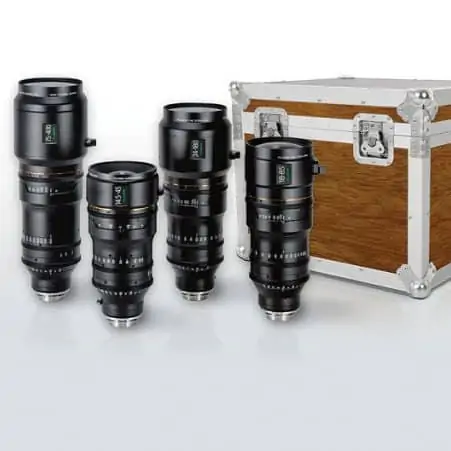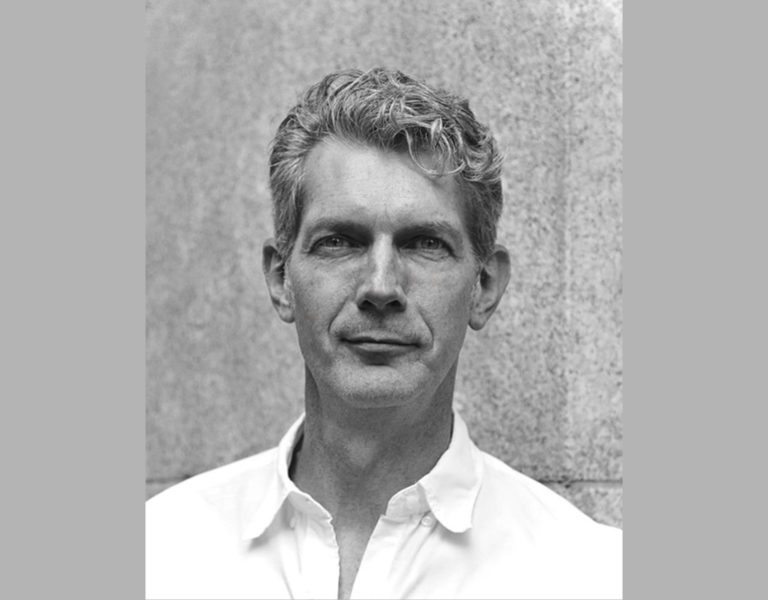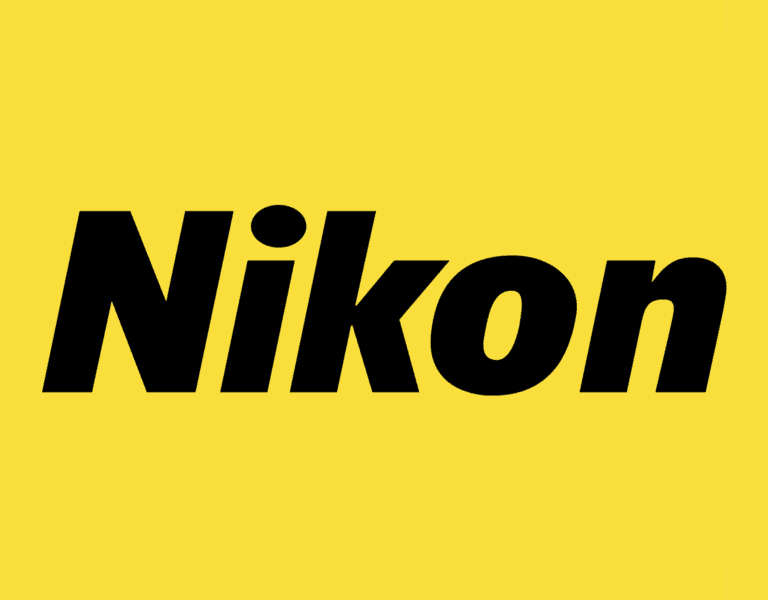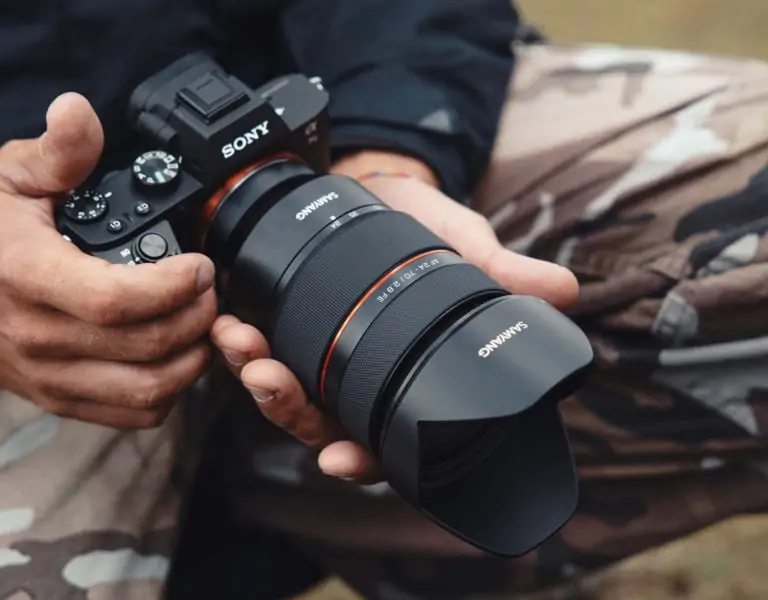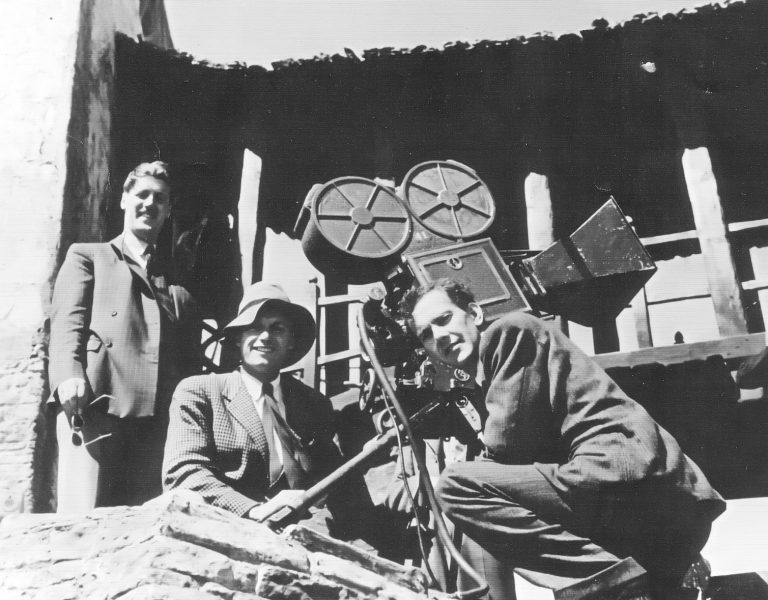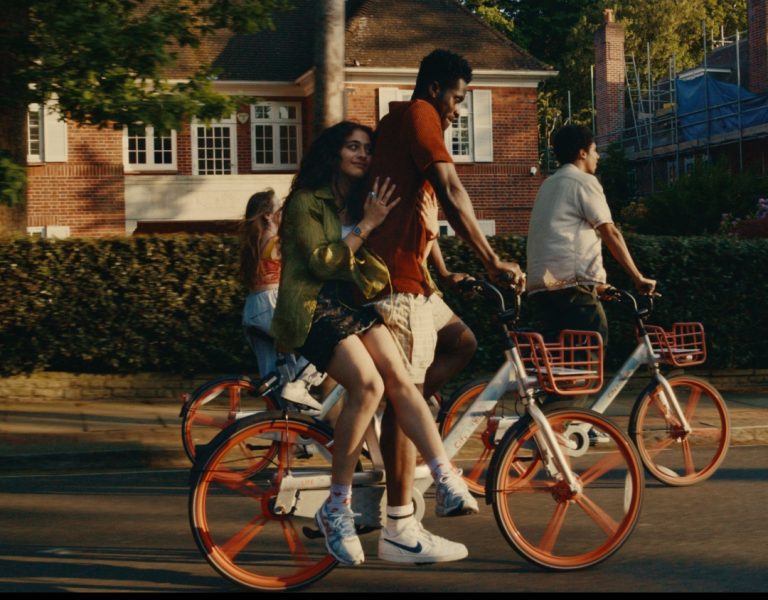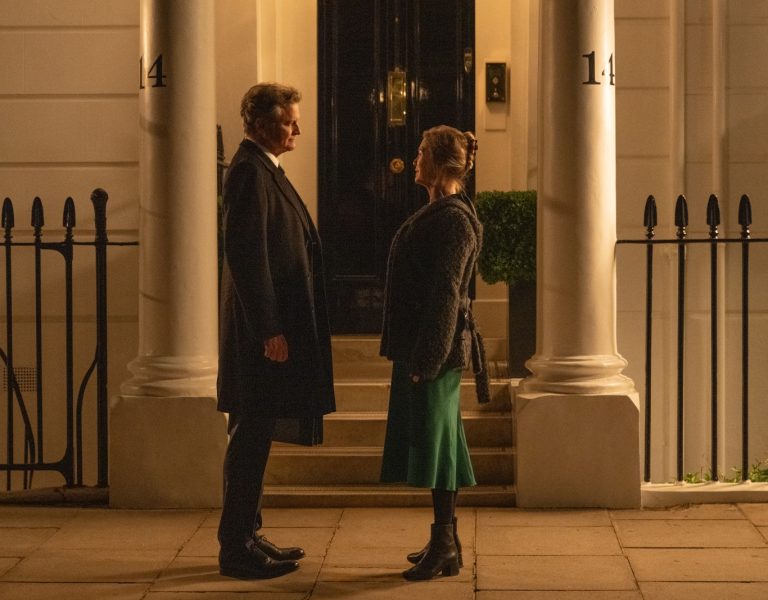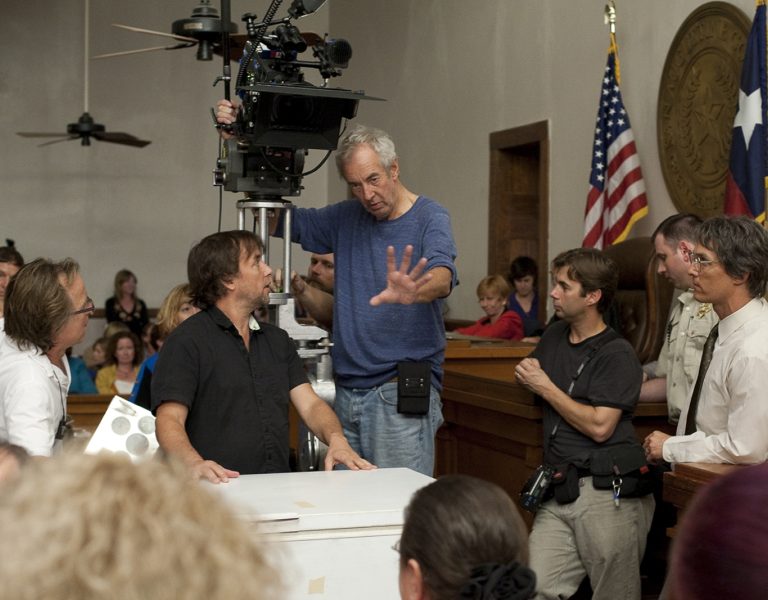The opening scene of The Godfather is a zoom that lasts almost three minutes. Some feel that this is the most important scene in the most important movie.
This was shot with a computer-controlled zoom lens built over fifty years ago. Despite the enormous technical advances since then, this scene could not be captured using the latest cinematography equipment available today.
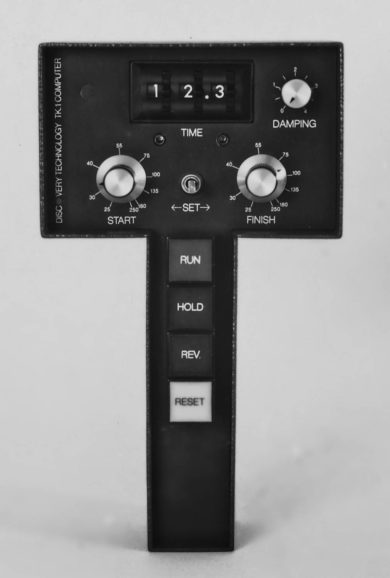
The T-shaped handle contains both the computer and its interface. Despite the complexity of its function, the interface is simple and easy to use.The director or cinematographer sets the START and FINISH framing of the zoom while looking through the camera lens. The length of time the zoom will take is set with the digital switches at the top. The DAMPING control sets an optional soft start and stop, so the zoom will blend in.The zoom move is triggered by pressing the RUN button. The HOLD button lets you pause the zoom if it is running too fast. The REV button lets you reverse the zoom. The RESET button lets you instantly reset the zoom for the next take.
The entire set — The T-shaped handle with the computer and its interface, the case with the batteries, charger, and motor control, and the Angenieux 25-250mm lens with the housing containing the motor and feedback sensors. The small box with two knobs is for running the zoom manually.This is the very first computer system designed for motion picture production.
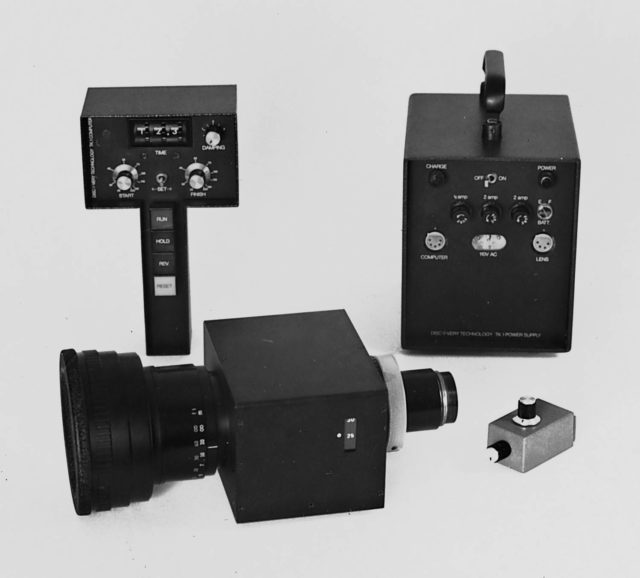
Here we are at the Film 71 show in London. The Angenieux zoom lens is mounted on a 35mm Arriflex. This was the sort of setup used to shoot The Godfather.There are only two cables going to the camera — the power cable for the camera’s motor, and the control cable for the zoom lens.
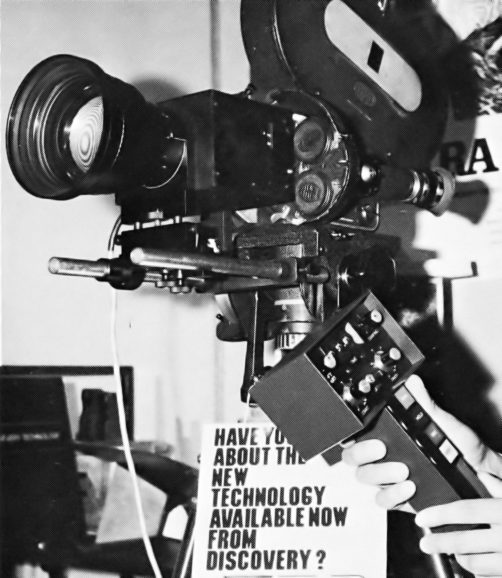
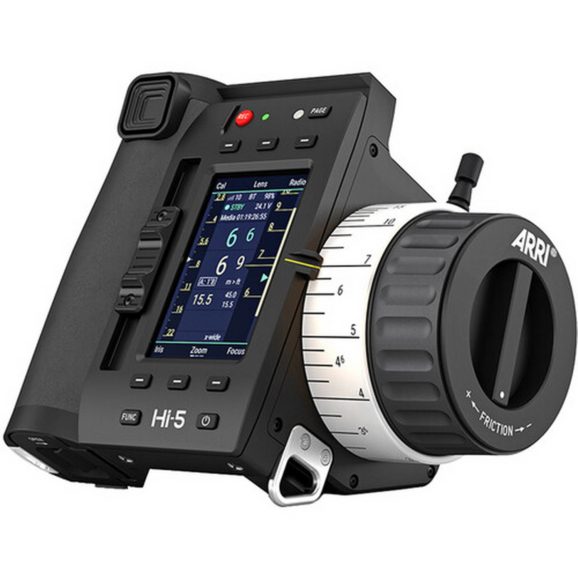
And now a word from our sponsor
This is all about an opportunity. It’s an opportunity to extend the vocabulary of cinematography. It’s an opportunity to add new camera moves and storytelling tools.Zoom lenses aren’t used to their full potential because there isn’t a way to program them. Or a way to make them move slowly. There is no way for the director or cinematographer to easily set up a zoom shot. There is no repeatability so you can do rehearsals and then make multiple takes. After 60 years, the lack of programming tools has kept the zoom lens an unevolved cinematography tool.The opening scene of the Godfather is a demo of what a zoom can do. Francis Ford Coppola and Gordon Willis originally didn’t want zooms. But they ended up doing something brilliant. Using a programmable zoom, they made what many consider the most important scene in the most important movie.If you’re using one of the high-tech, all-in-one devices like the one shown above to control your zoom lenses, you’re using them at about one percent of their potential as a cinematic tool.
Let’s start with the basics
A zoom is a cinematic move. It has a start and a finish and a time and an optional soft start and stop. It can be set up and refined by the director or cinematographer. It’s Rehearsed and refined, and repeatable for multiple takes
Description of a zoom:
Framing the start (focal length)
Framing the finish (focal length)
Time the zoom will take (seconds)
Soft start and stop (optional)Note that zoom moves include a time element that requires a computer
The optional soft start and stop make the zoom blend in
Here’s an example from a storyboard
The shot begins with the actor’s full face and zooms in to just the eyes.
This move is timed at 30 seconds to match the actor’s speech in the script.
There will be a soft start and stop.
Using a programmable zoom:
Crew sets up camera in the approximate position
Cinematographer/director sets the framing for the start of the zoom
Cinematographer/director sets the framing for the finish of the zoom
Toggle back and forth to check framing
Adjust the camera position if necessary
Set the time for the zoom (in seconds) to match the storyboard
Add soft start and stop
Run the zoom several times to get a feel for it
Rehearsal – run the zoom during the actor’s speech
Adjust timing, if necessary, to match the speech
Make the shot, with retakes if necessary
Here’s another example:
A gubernatorial candidate promises to put drug dealers in jail for life. How to show this in a 30-second TV commercial? Have the drug dealer, in a jail cell, reach old age during a 30-second pullback.The first zoom shot was of the drug dealer at his current age. Then he held that pose while makeup was added to age him a little. Then another zoom. This was repeated seven times, with the makeup getting more extreme at each take. In the editing, sections of the different takes were spliced together.The subject aged fifty years during the 30-second pullback zoom.
This all seems so obvious, so easy. Unfortunately there is no existing cinematography equipment that can do this.Books on cinematography don’t show how to set up and execute zoom shots.Neither do film schools.Because zoom lenses can only make primitive moves, they have a bad reputation.Optics companies like Canon and Angenieux keep cranking out beautiful $50,000 zoom lenses, but there’s no way to program them and use them to their full potential.Cine lens controllers have evolved into high-tech, all-in-one units that access all of a lens’s functions. But they concentrate mainly on focusing, with the zoom axis hidden in a maze of touchscreen controls.Bottom line: There are no programmable zoom lens controllers available today.
All sorts of new things in the future
Let’s go back to the opportunity part. Think about having a new creative tool to add to your collection. This is about the future and what new things will be possible. This is more than just a new high-res camera or a new way of linking things together. This is about the ability to do shots that have never been done before.Programmability, repeatability, and zooms that can take minutes rather than seconds.Think of small, slow, subtle zooms. Not so obvious. Adding texture.
But wait, there’s more.
Once you have a programmable, repeatable zoom lens, you can combine it with other programmable equipment, such as programmable pan heads.Multi-moves – Programmable zoom used with other programmable equipment.
Someone new in the camera crew
“Focus-pulling” is a highly regarded aspect of cinematography. There’s a lot written about focus-pulling, and lots of tools have been created to support it.But zoom-pulling does not exist. There are no zoom pullers. So let’s invent a new title — Zoom Puller.
What the Zoom Puller does (pending union approval):
Responsible for all equipment specifically related to zooming.
Set up and calibrate zoom-related camera equipment.
Assist in setting up zoom shots.
Run the zoom during takes.
The zoom puller will be an expert in zoom shots, and in choices of zoom lenses to create different effects. There are lots of zoom lenses out there, waiting to be programmed, and the zoom puller must be familiar with all of them.The zoom puller will also be knowledgeable about the zoom controllers from different manufacturers and their characteristics and use.This is a bare-bones look at zoom pulling. The role will evolve as knowledge about this new area of cinematography grows.
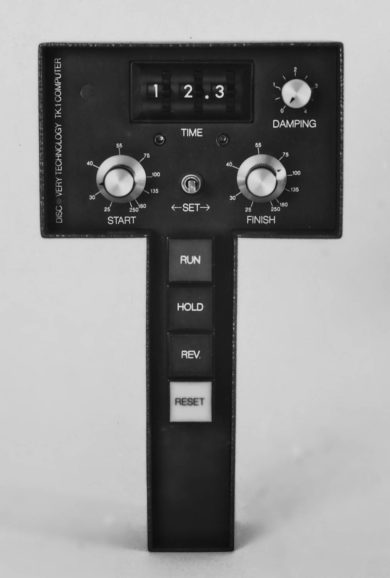
What about the zoom controller?
Let’s start with the basics: The zoom control will be separate from all the other camera controls. It will not be part of some humongous, all-in-one lens control. You don’t want the zoom puller fighting with the focus puller. The interface of the zoom control will be dedicated solely to the programming of zooms. The interface will be intuitive and easy to understand. The controller will make it easy to set up and execute zooms, like the ones in the examples above.If you look at the T-shaped gadget above, you have some idea of what a dedicated, programmable zoom controller might look like.
Some thoughts from someone who’s been there
Fifty years ago, I designed and built the programmable zoom controller used to shoot the opening scene of The Godfather. At the time, it seemed like an impossible task, but somehow things worked out. Now, fifty years later, it turns out that this was the only programmable zoom controller ever built. In spite of all of the technological advances since then, that’s it. So I guess that this makes me the world’s foremost authority, by default.
Today, this is an opportunity to build something new. I’m 83 years old, and I’ve long since hung up my soldering iron. But I still have all of the knowledge that it took to build the original. And my days are free. Surely, there must be folks in the cinematography equipment industry who are looking to build something new. A new tool that will extend the vocabulary of cinematography. Arri, are you listening? Angenieux, are you listening? Canon, are you listening?
